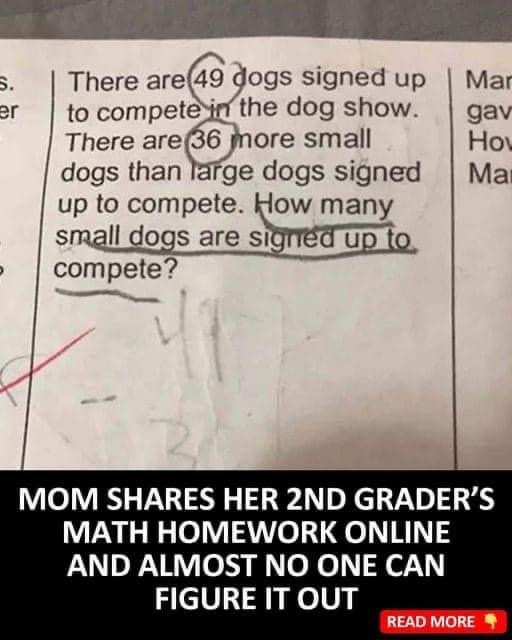Homework has long been a rite of passage for schoolchildren, often met with a mix of anticipation and dread. The case of Angie Warner’s second-grader brings to light the complexities sometimes hidden within seemingly innocent math assignments. Let’s delve into the saga of this befuddling math problem and its eventual resolution. The Prelude: Childhood Dreams Meet Reality As children, the idea of homework often signifies a step toward maturity. Yet, the reality of grappling with assignments can quickly dampen the initial enthusiasm. Angie Warner’s reminiscence of her own kindergarten days sets the stage, reflecting on the evolution of perception toward homework from a symbol of adulthood to a source of challenge. “There are 49 dogs signed up to compete in the dog show. There are 36 more small dogs than large dogs signed up to compete. How many small dogs are signed up to compete?” A query that appeared straightforward at first glance soon unraveled into a labyrinth of confusion. The Misdirection: The Illusion of Simplicity In The Homework, At first glance, the solution seemed apparent—36 small dogs.
Yet, this conclusion belied the intricacies embedded within the problem’s wording. It was not the answer! As Angie’s plea for assistance reverberated through the digital ether, responses poured in, each grappling with the elusive solution. From seasoned mathematicians to everyday parents, all were ensnared by the enigma presented by a mere second-grade homework assignment.
The solution, though seemingly unorthodox, stemmed from a meticulous application of algebraic principles. Here is how the exact math went:
Here’s the math behind the problem. What you’re doing is trying to solve for x. Think of large dogs as “x” and small dogs as “y.”
49 = x+y and y = x+36
So, combine the two equations and you get:
49 = x + x+36
49 = 2x + 36
13 = 2x
x = 6.5
y = 42.5
